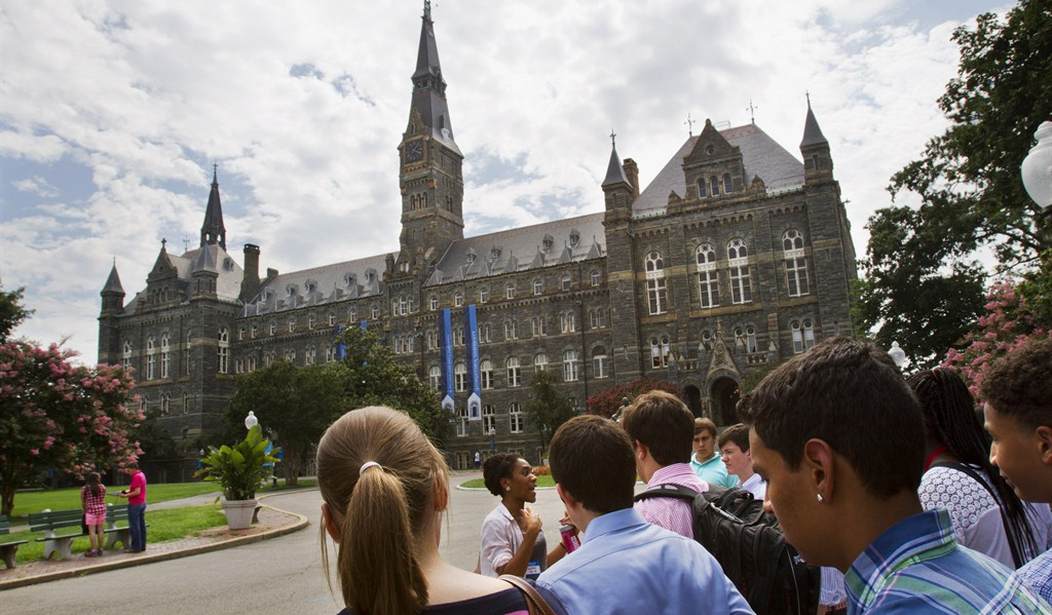Late last month, the Chronicle of Higher Education featured an article titled “An Epidemic of Anguish,” in which the author describes the skyrocketing rates of student mental illness on campuses. Although this is now garnering national attention, it is not a brand new problem -- those of us working in academia have heard the urgent calls for more resources and more assistance coming from student health offices and counseling centers for at least a decade.
The Chronicle references the National Survey of College Counseling Centers. According to that report, 86 percent of counselors report an increase of students arriving on campus already on psychiatric medication. 94 percent report larger numbers of students with a history of anxiety issues, depression and self-injury (“cutting”) before they ever get to college. Fifty-two percent of college counseling center clients have “severe psychological problems” -- an increase of almost 10 percent in just two years! Tragically, 86 percent of the individuals who committed suicide never sought any help at all.
Understandably, the Chronicle article explores institutions’ responses to the increased need, and raises serious questions about the proper role universities should play in providing mental health services.
What shocks me,however, is that no one seems to be asking the obvious question: why are our young people suffering from mental illness in ever-greater numbers?
Was there perhaps mental illness that went undiagnosed or untreated in prior generations? I’m sure of it. But that does not explain the current rates of depression, anxiety and other disorders.
Every individual is different, of course. And for each family, the diagnosis and treatment of a family member suffering from mental illness must therefore be individualized. But there are unquestionably societal trends that are contributing to this “epidemic.” We are being irresponsible if we do not ask ourselves some very hard questions. And we’d better be prepared for some uncomfortable answers.
Recommended
If we want to know why young people today are drowning emotionally, when young people in earlier generations were not, we might start by asking what’s different. It isn’t economic privation. Previous generations of young people lived through World War I, the Great Depression and World War II. Immigrants arrived here with nothing. There have always been those in dire economic circumstances.
Here are some things that have changed:
--The family has unraveled. There is too much divorce; not enough stability; and not enough time with both parents, especially fathers. According to the Pew Research Center, only 46 percent of children (under 18) in the U.S. are living with two heterosexual parents who are in their first marriage. In 1960, that number was 73 percent. Even as recently as 1981, 61 percent lived with both parents. Half of children today will witness the divorce of their parents’ first marriage, and within that group, half again will see their parents’ second marriage break up. Indeed, marriage is increasingly viewed as optional. Today, 41 percent of children are born outside of marriage; in 1960, only 5 percent were.
It may be what the grownups want, but it is devastating for children’s health and well-being. Study after study has shown that children from divorced families suffer more physical ailments and perform at a lower level academically. Teenagers from divorced households are three times more likely to need psychological help. Adults whose parents divorced when they were young have more difficulties with personal relationships. Children in single-parent homes are significantly more likely to live in poverty, along with all that that entails.
--Too much school and not enough “down time.” American children spend, on average, 42 days more a year in school than their counterparts in most other developed nations. Experts in human development argue with increasing fervor that the sit-at-your-desk-all-day method of schooling is detrimental to learning and overall brain health, as is the elimination of recess, gym and other “non-academic” outlets during the school day. After-school time is filled with structured activities. Parents worry -- with good reason -- that their children are “overscheduled.” Why are we insisting that children do so much? Because of our expectations for them? Because there is no one at home to take care of them?
--Related to that last one: Too much work, too much pressure, and not enough sleep.
Expectations and the amount of homework have both increased dramatically. Standardized tests increase the pressure students feel, as do the heightened requirements for college admission. (“Top” schools fight to attract greater numbers of applicants with even higher stats; not so they can admit more students, but so they can rejectmore. That’s a topic for a whole ‘nother column.) As work levels have climbed, so have students’ stress levels. A Stanford Medical School study revealed that the number of students aged 7-17 being treated for depression more than doubled, just between 1999 and 2005.
Unsurprisingly, most children in the U.S. are not getting enough sleep. And there are enormous mental, emotional and physical health problems caused by lack of sleep, including obesity, lowered cognitive performance, and attention deficits.
--Too. Much. Sex. I don’t just mean children having sex -- although that occurs, and it’s bad. I mean too much exposure to sex and sexual themes, particularly adult sexual themes, and not enough time to be children.
The culture is already permeated with vulgar and explicit sexual themes in film, TV, music and social media. But that’s not enough -- we need to put it in school. Why? Why is it necessary that a 9-year-old know what your sexual preference is or with whom you sleep? Why does a middle-schooler need to learn how to put on a condom? The standard lines are that “we are teaching children not to discriminate” or that “they’re going to have sex anyway, so we’re teaching them ‘safe sex.’” What we are actually doing is stealing their childhood, burdening them with things that they cannot understand, cannot handle, and should not be expected to handle. We are also making them sick -- a majority of the 20 million new STDs each year are diagnosed in 15- to 24-year-olds.
We are perversely hypocritical. If we wonder why we have a “culture of sexual assault” on college campuses, maybe it is because we don’t speak up when everything in our culture treats sex like recreation, or a spectator sport. And we would certainly never say, “Well, kids are going to smoke anyway, so let’s give them filtered cigarettes,” or “They’re going to drink and drive, so let’s just put roll bars on the car.”
Why are we putting our children through this -- any of it? We’ve been doing whatever we like and telling ourselves for several decades now that “the kids are all right.” Clearly, many of them are not all right.” And it’s time we stopped denying our role in it.

























Join the conversation as a VIP Member